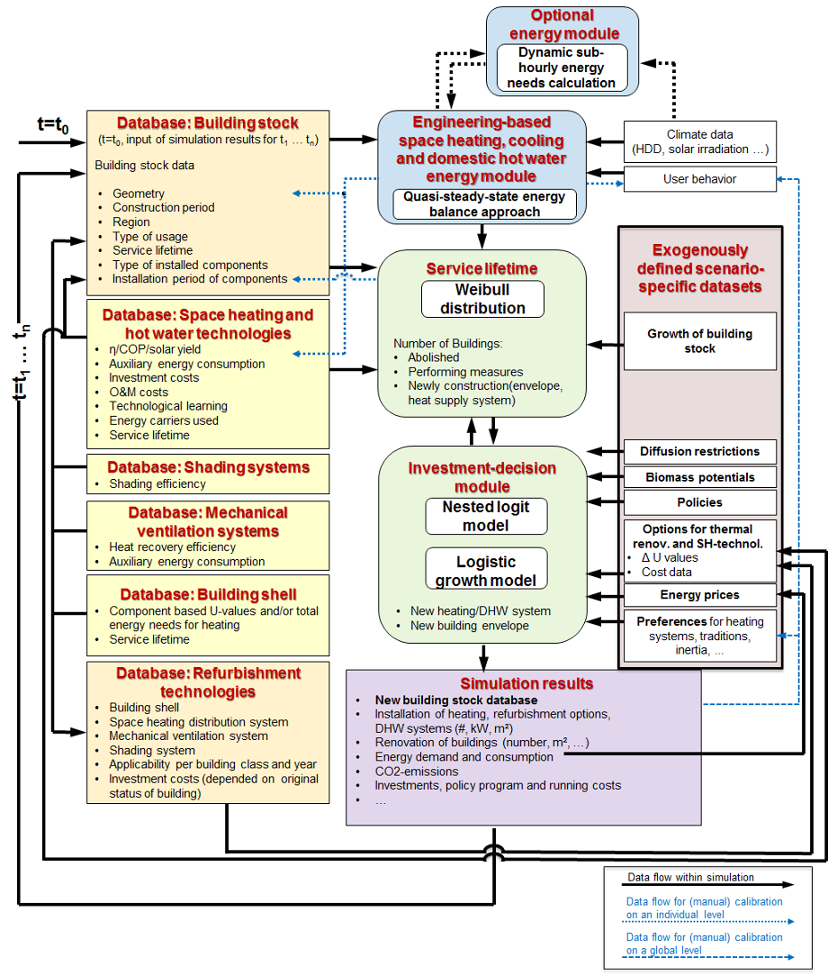Methodology
The core of the tool is a nested logit approach, which optimizes objectives of “agents” under imperfect information conditions and by that represents the decisions maker concerning building related decisions.
Technical implementation: Python code
By using a Weibull distribution, those buildings and components are identified, which have to be replaced or abolished. An agent-specific, nested logit approach combined with a logistic diffusion curve models the choice between technologies (renovation measures, HVAC systems). By this approach, Invert/EE-Lab models the decision-making of agents (i.e., building owner types) regarding building renovation and space heating, hot water, and cooling systems. Policy instruments, such as economic incentives, regulatory instruments, information, advices may affect these decisions.
Taking into account regional climate data, a standard static monthly balance approach calculates energy needs and delivered as well as final energy demand.
Invert/EE-Lab models the contribution of PV to electricity consumption (i) for appliances, (ii) for heating and hot water, and (iii) for export to the grid. The model simulates building owner’s decisions regarding the choice for a PV system and the size of installed PV collectors.
The module for the cooling energy demand in addition simulates the diffusion of cooling devices in buildings.
The lighting module focuses on a vintage model based on regulatory instruments and technological progress without endogenous modelling of investment decisions.

Fig. 1: Structure of Invert/EE-Lab
Outputs from Invert/EE-Lab
Standard outputs from the Invert/EE-Lab on an annual basis are:
- Installation of heating and hot water systems by energy carrier and technology (number of buildings, number of dwellings supplied)
- Refurbishment measures by level of refurbishment (number of buildings, number of dwellings)
- Total delivered energy by energy carriers and building categories (GWh)
- Total energy need by building categories (GWh)
- On-Site generation of renewable energy (solar thermal, PV, ambient energy)
- Policy programme costs, e.g., support volume for investment subsidies (M€)
- Total investment (M€)
Moreover, Invert/EE-Lab offers the possibility to derive more detailed and other types of result evaluations as well. Based on the needs of the policy processes, we will have to discuss which other types of evaluations of the result data set might be required.